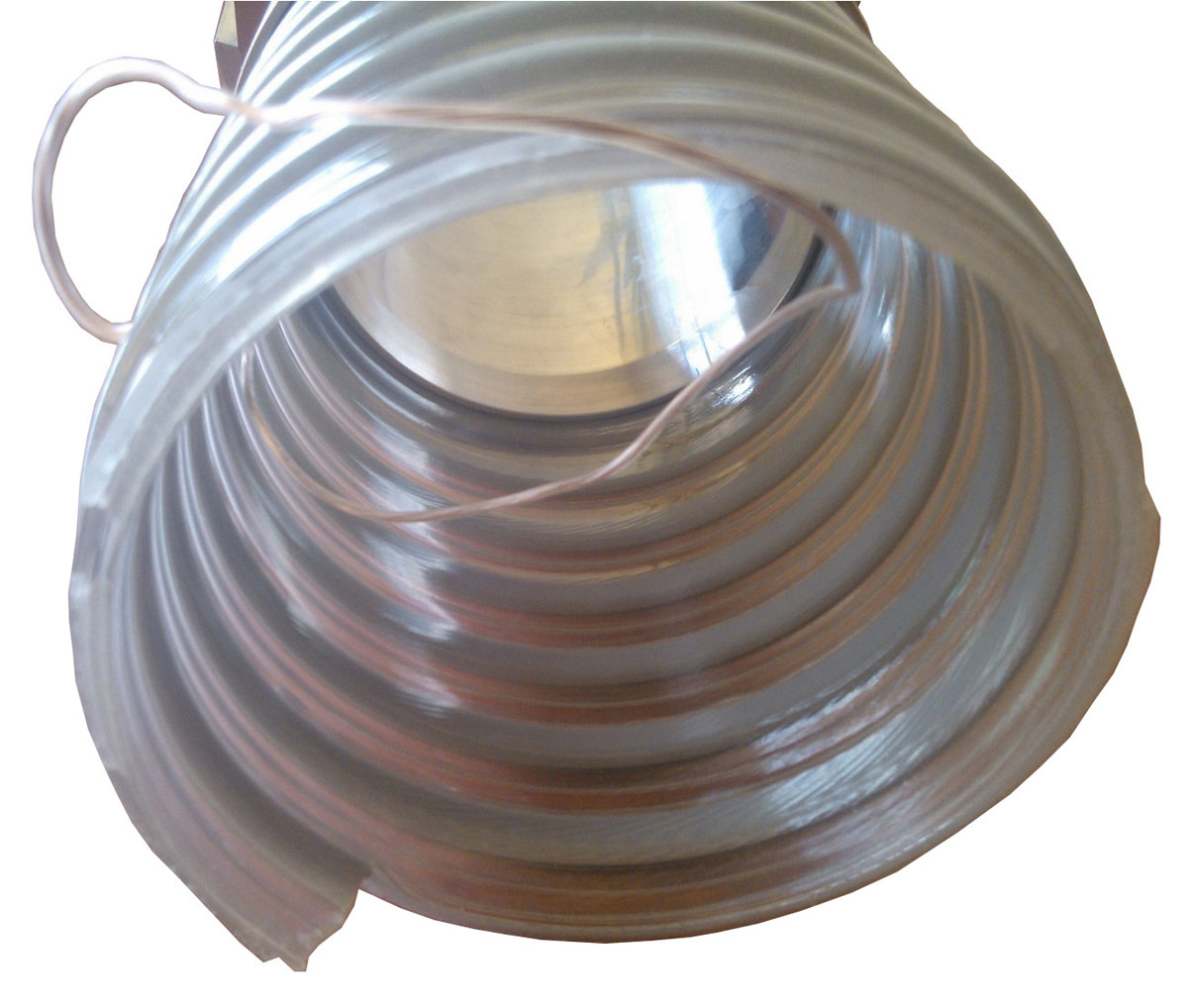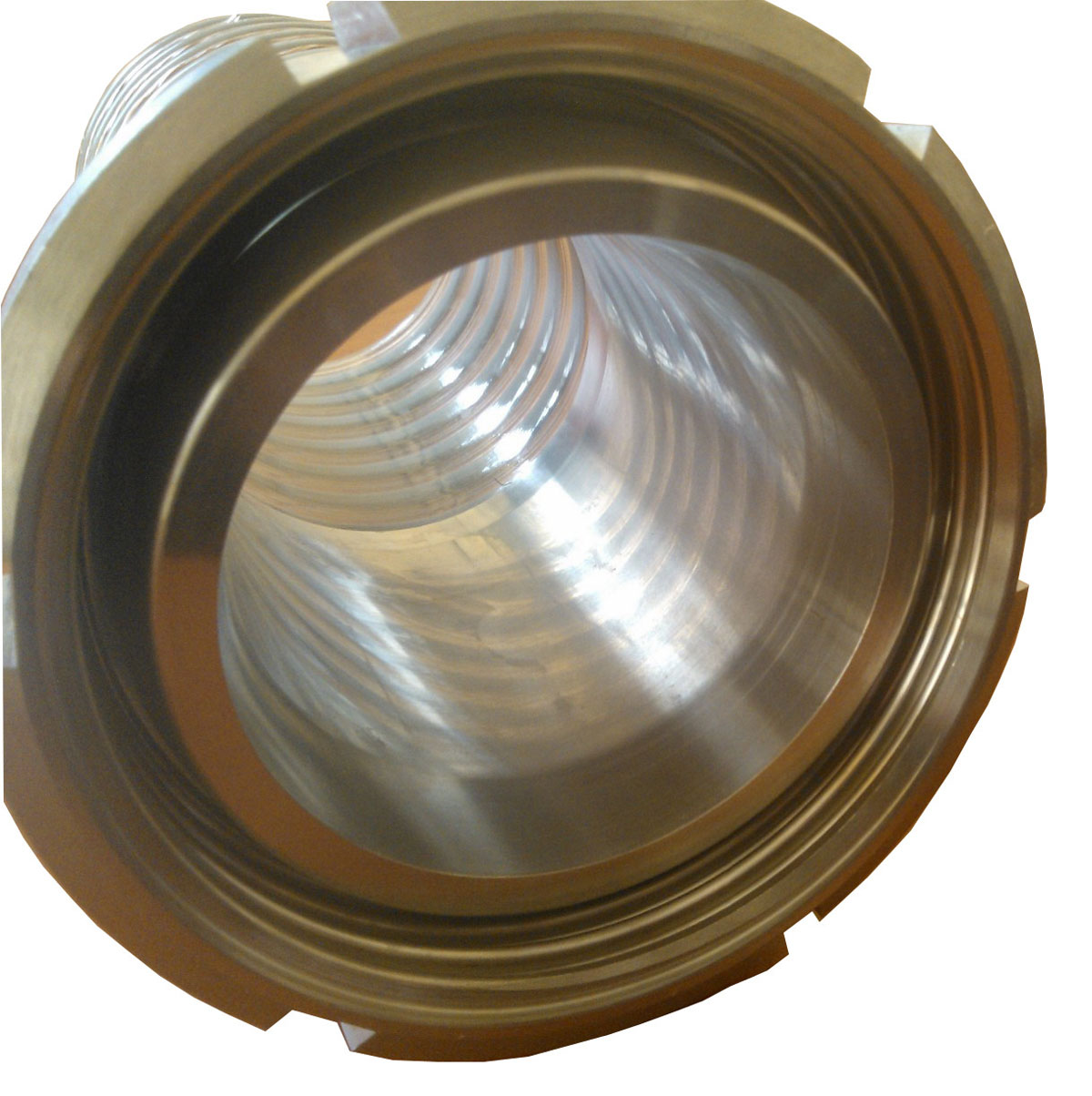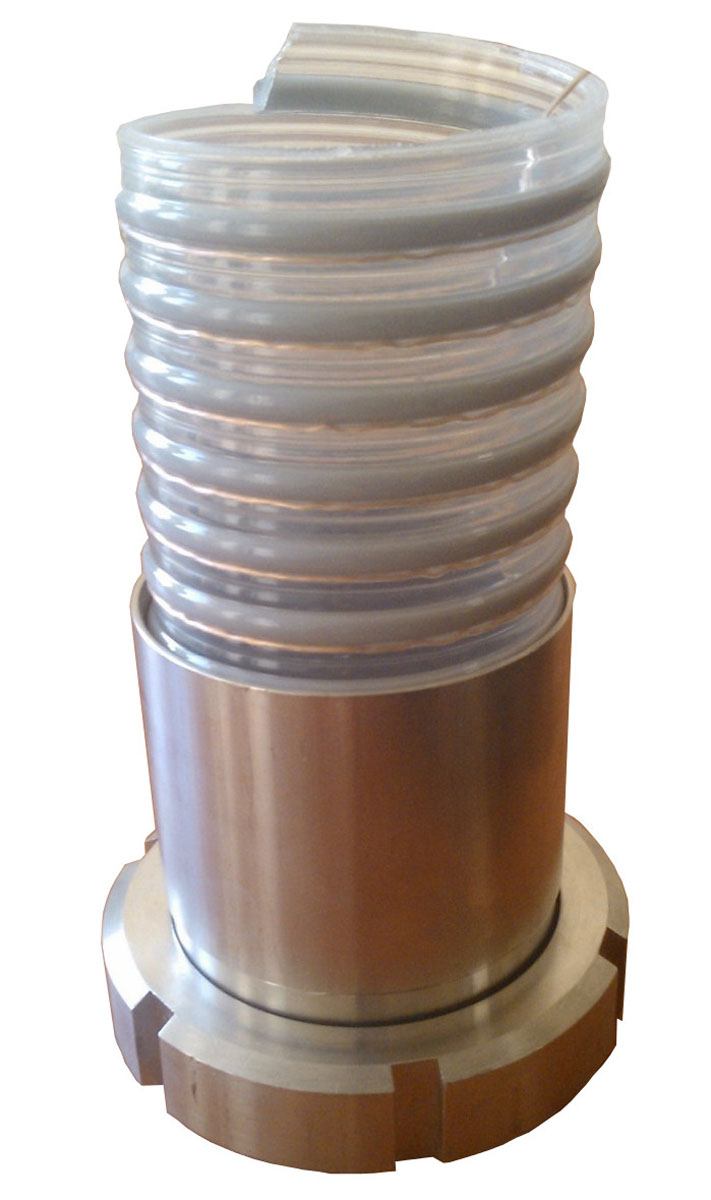Sometimes there is a need to convey dry materials such as powders or granules through the hose, so through an elastic line or connection. In such case we usually look for heavy solution – rubber hose. But the same job can be done sufficiently by thermoplastic hose as well. This example shows how we do successfully serve that application. First hose assembly had been sold over one year ago.
What is important in dry materials handling except of bore size, coupling types and food quality materials:
The main reason that can disqualify thermoplastic hose is temperature. But as far as it is not higher than 85°C we are able to use mentioned hose. In our model application vacuum occurred with value of 0,6 bar at bore size 50 mm internal diameter.

Our solution fulfils also abrasion resistance requirements. Structure of the hose lets to keep smooth inner layer even when banded. Sometimes when banded, a hose becomes corrugated inside on lower radius wall. Then a flow of dry materials react with parts of hose at higher angles, doing some surface damages and wear the hose, shorting its lifetime. Keeping smooth surface is key parameter but not the only one. Our hose is mainly built of PVC but internal layer is polyurethane. In the same conditions PU is 4-5 times more abrasion resistant than PVC. This makes the lifetime be even longer, additionally.
During dry materials handling, a big problem is static electricity. Our solution prevents it quite effectively. There is copper wire along the rigid PVC spiral, attached into the material. On the ends it is connected to metal couplings that lead electric charge to a machine body and to the ground further on. Complete hose assembly we use has resistance 0,075 Ω/mtr.
Another advantage of our solution is transparency not available in case of rubber hoses. This is a factor customers like very much. It gives them possibility for visual controlling what is going on while working.

Couplings. They have to match to requirements of devices to be connected by the hose but their quality and internal shapes play a major role. Made of stainless steel AISI 316 and micro polished for staying clean. Such surface is also important for smooth flow of dry medium being transported, making it easier. That kind of hygienic couplings have also special shape of hose tail. This part is mounted inside a hose reducing slightly internal diameter of the path. For protecting proper flow and abrasion resistance, end of the hose tail has decreasing wall thickness to minimum. That shape is shown in a picture.
Resuming – Our solution in described application has been working, for one of our customers, for almost one year and the end user is very satisfied. Lighter weight, transparency and purchase price are big advantages for him.

